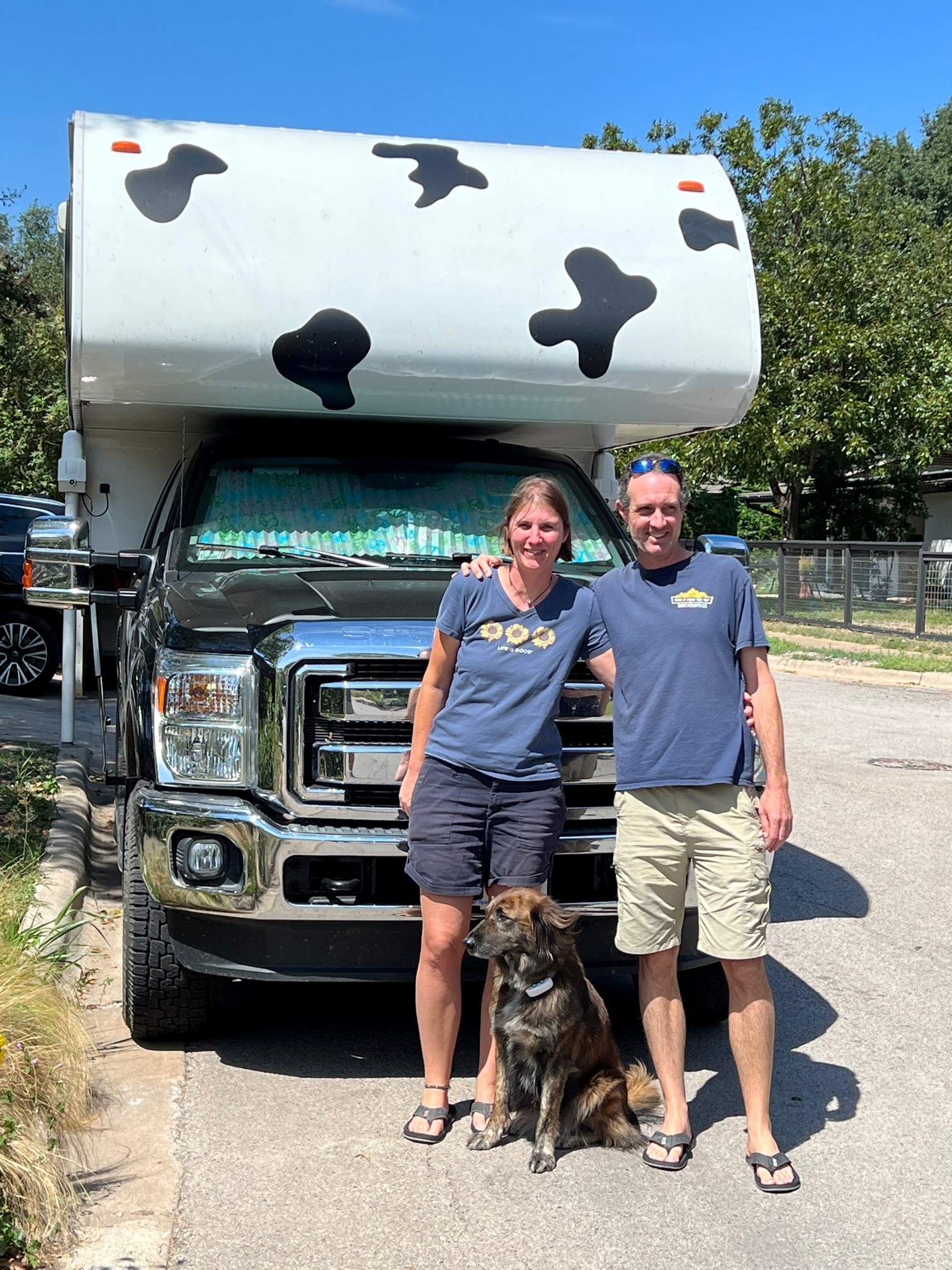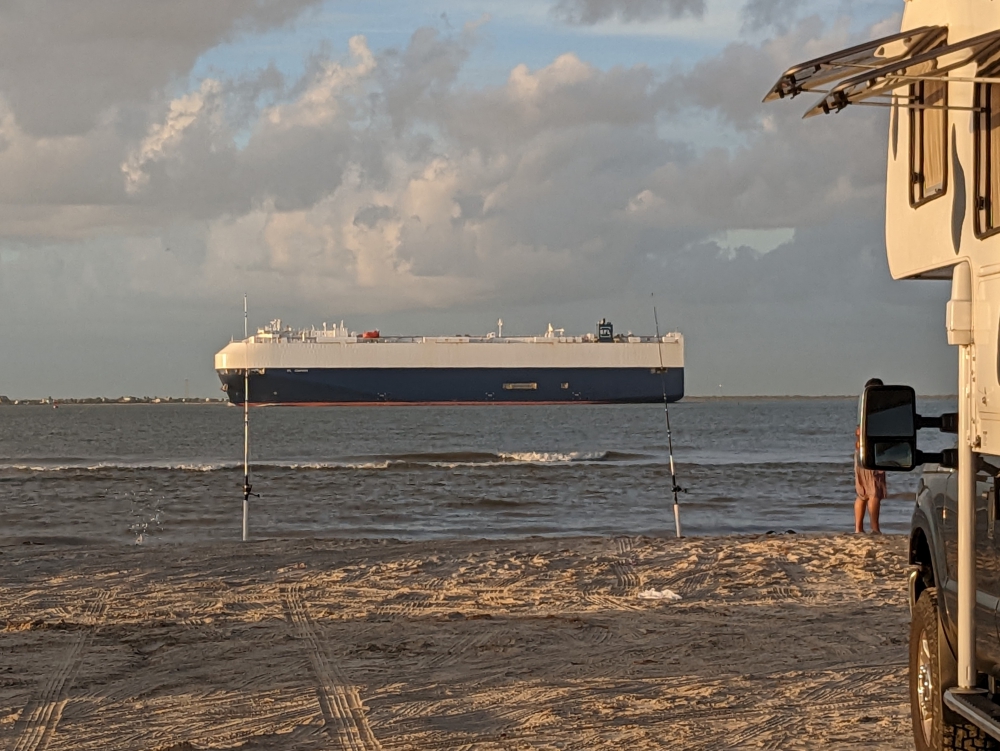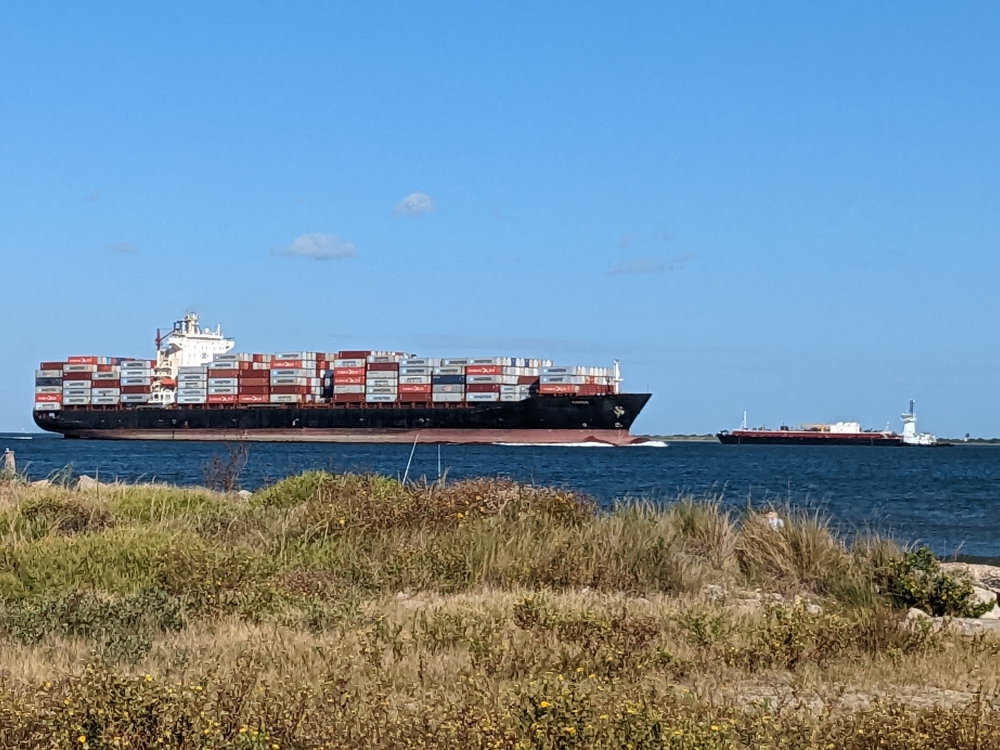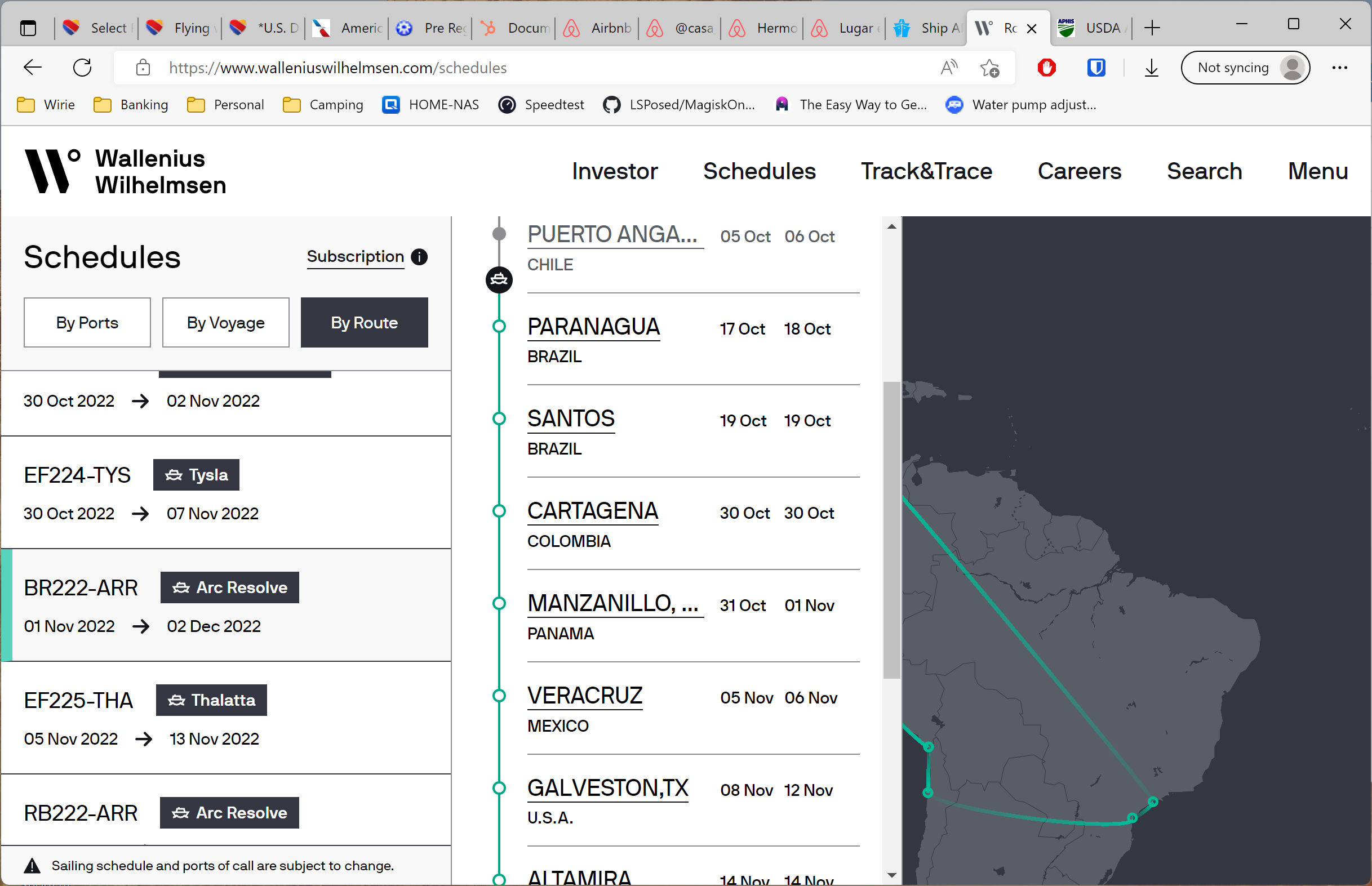Moving a small family of two adults and a dog, their home on wheels, and all their belongings between two continents that are not connected by road is not an easy or straightforward task. I’m planning to post several blogs about the procedures, the execution, and the impact over the coming weeks. To avoid information and sensory overload, I will split some of these topics over two entries, an informative one and a personal one. Today, I will provide facts and tips about how to actually ship your vehicle abroad. The next blog in the series will elaborate on our personal challenges and experiences going this route.

Liesbet, Mark, Maya, and Thirsty Bella
1. Decide on a shipping method: RoRo or container
The two most common ways to ship a vehicle, whether it’s a car, motorcycle, van, or RV, are via a container or a RoRo (Roll-on Roll-off) ship. Less frequent is LoLo, which means being parked on a flat rack of a container ship, at which point, it’s usually cheaper to opt for RoRo. All three fit the category cargo ship. Your choice most likely will boil down to size restrictions.

RoRo ship or car carrier
The safest, most secure, and cheapest way to ship a vehicle is in a standard container. These come in three lengths; 10 feet (~3 meters), 20 feet (~6 meters), and 40 feet (~12 meters). The most cost-effective option when you have a car or low-rise van is to share a 40ft container with someone else. The maximum height of these containers ranges between “standard” height (8.5 feet or 2.59 meters) and “high cube” (9.5 feet or 2.74 meters) and their width is 8ft.

Container ship in Galveston
The dimensions of Thirsty Bella are 21.8ft (6.65m) of length, 8.8ft (2.67m) of width, and a height of 10.5ft (3.20m). We could have potentially separated the truck and the camper to fit in a 40ft container lengthwise, but the camper part would still be too wide. Therefore, we had to ship our vehicle with RoRo, which means it’s not enclosed and locked up. You drop the camper off at a port (Galveston, Texas, in our case) and leave the key of the truck. An employee drives and parks it onto the ship (roll on), and an employee of the arrival port (Cartagena, Colombia, in our case), moves the vehicle on shore (roll off).

Thirsty Bella
2. Decide on a route
There are several routes between the United States and South America. The US has departure ports on the East and West coasts and in Texas. Arrival ports include Colombia, Chili, Ecuador, and Uruguay. You can also ship to/from the east coast of Mexico and Colon, Panama, the shortest distance to Cartagena. As mentioned in a previous post, the Pan-American highway does not connect the countries of Panama and Colombia, due to the notorious and inaccessible Darien Gap, so you have to put your vehicle on a ship if you want to explore South America overland.

One of the boat routes/schedules
3. Research shipping agents and book a slot
Continue reading


